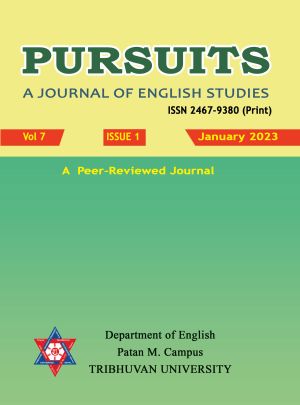Dialectics of Subaltern voices in Barbara Nimri Aziz’s Heir to a Silent Song
DOI:
https://doi.org/10.3126/pursuits.v7i1.55376Keywords:
Subaltern, messiah, Pathos, aberrations, social evils, oppression, crusade, Marginalized, genderAbstract
Heir to a Silent Song is a prose work by an American writer, anthropologist, critic and a vibrant researcher Barbara Nimri Aziz. Beside the delineation of her travel record and the rustic life of common people living in the eastern hills, the prose echoes the subaltern voices as a protest against evils and aberrations existing in the social system. As an epitome of the voices of the voiceless, it depicts the plight, the grievances and the pathos of basically two female rebels from the eastern hills of Nepal: Yogmaya and Durgadevi.
Subaltern studies are the study of social protest, and the social exclusion and exploitation. Since subaltern refers to the group of oppressed, suppressed and marginalized people, Aziz ventures to portray them as the messiahs of subaltern people in her work. This paper strives to explore how Aziz delineates them as the representative figures of subaltern aesthetics. It attempts to answer the questions: “How do Yogmaya and Durga Devi represent subaltern voices? and what do they combat for? ”This research study conceptualizes the theoretical frameworks of subaltern theories to invigorate the study. Aziz presents how two women combat for female rights and justice for the poor and low class people in the contemporary society during Rana regime. The desperate struggle of two subaltern females against social evils like caste and gender discriminations, corruption, exploitation, fraudulent activities etc. is a striking thrust of the prose work.




